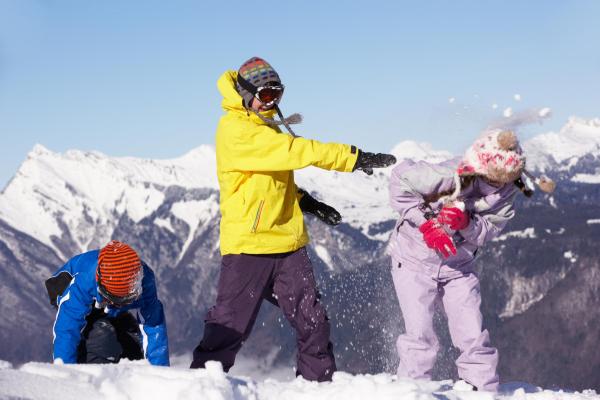How to Dress for a Snow Day


During winter the days are shorter and the cold weather makes us want to stay at home under the blanket. But it also bring some factors that make it the favorite season for many people. Among them, one of the most fun and popular options is to use free time to visit snowy mountain meadows for a few hours.
Going to the snow, playing with friends or even doing an activity like skiing, can be a great way to make the most of the cold weather. But if you are not well equipped, it can be not only uncomfortable, but dangerous. That is why, in this oneHOWTO article, we suggest how to dress to for a snow day. We provide tips on what you should and should not wear and what is the right way to equip yourself.
How to dress in layers
Going in to the snow is not the same as thinking about getting out in the cold to go for a walk. Low temperatures, combined with the humidity of the environment generated by frost, must be prevented with very specific clothing. The key is dressing in layers. Textile technology has made it possible to have different fabrics to dress, keeping us like a cozy onion. It makes the body transpire, helps us be comfortable and protects from the impact of wind and snow.
In order to better understand the correct way to dress for the snow, here are the three types of layers you should consider.
Base layer
In this first layer you should always think of wearing t-shirts and leggings. They should be made of very soft and breathable materials. These layers are those in direct contact with the skin. The garments are generally tight-fitting to both generate store optimal body heat. They are known as thermal garments, made of thin, pleasant-feeling materials that promote and maintain body heat.
Middle layer
For this middle layer we can be a little more flexible. Since this is the layer that will generally give us the feeling of comfort, cushioning and warmth. It is advisable to use looser garments to generate a pocket of heat between the two layers. A cotton sweater or any sweater or sweatshirt especially for low temperatures can be perfect.
Outer layer
This last layer is usually one of the most important. While the inner layer keeps our body warm and comfortable throughout the day, without a quality outer layer all our gear may be ruined. This is the layer that protects us from all external factors, i.e. rain, snow water, wind gusts and the general environment.
This layer must be a special garment for snow that covers at least to the buttocks, ideally below. It should keep your chest warm, but you should also still have full mobility. The material should be light and resistant, with a windproof effect. Of course, it should also be waterproof. Also, it is advisable to have a good hood to protect your head and ears. It would be perfect to wear a high collar, so that you can be completely covered if the weather gets heavier.
Accessories
It is clear that one of the main factors that will help us enjoy a snow day is the clothes we wear. No matter how beautiful the scenery, the cold can become a real nuisance and even threaten our lives when sufficiently cold. For this reason, we can use a series of accessories that can help us make the day more comfortable and fun.
Here are some accessories that you can take to the snow and that will prove very useful in keeping you safe:
- Gloves: essential if you want to handle the snow without that strong feeling of cold. They must be thermal and waterproof to withstand the weather.
- Goggles: if you are going to do any sport or spend a long time in the snow, remember that the white reflects the sun and your eyes can end up damaged. It is advisable to wear sunglasses for snow.
- Walking stick: if the snow is very thick and with high layers, the most comfortable way to be able to walk is a special hiking stick to guide you and support you.
- Snow shoes: you will not need these for light snow, but if you are walking in heavy snow, they are important. Without them, you will keep sinking in the snow. This is not only difficult to traverse, but it will soak your feet and cause other problems.

Clothing to avoid in the snow
It can often happen that a great day can turn into an ordeal if you don't have the necessary equipment. Here some clothes you shouldn't take to the snow if you don't want to end up soaked and freezing to death:
- Rain boots: also known as Wellington boots, they will not prevent snow from entering your legs and also, you will walk uncomfortable.
- Cotton or cloth outer garments: these garments are prone to getting wet and at low temperatures you will not be able to stay dry all day.
- Ordinary gloves: if you happen to pick up a snowball with a wool glove or similar, rest assured that your hand won't be dry and hot again until you get home. When it is very scold, this can increase the probabilty of frostbite.
If you want to read similar articles to How to Dress for a Snow Day, we recommend you visit our Fashion & Style category.





